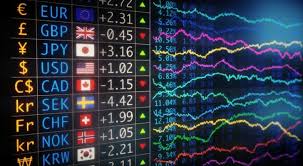
Forex exchange trading, often referred to simply as forex trading, is a complex and dynamic field that attracts traders from all walks of life. From retail investors to large institutions, the forex market offers vast opportunities for profit, but also comes with significant risks. Understanding the intricacies of this market is essential for anyone looking to delve into trading. To enhance your trading skills, you can visit forex exchange trading trading-terminal.com for valuable resources and insights.
Understanding the Forex Market
The forex market is the largest financial market in the world, with a daily trading volume exceeding $6 trillion. Unlike traditional stock markets, the forex market operates 24 hours a day, five days a week, allowing traders to engage at any time from anywhere in the world. This decentralized market has no central exchange; instead, currency pairs are traded directly between participants through electronic networks.
Key Participants in the Forex Market
Several key players dominate the forex market, each with distinct motives:
- Central Banks: These institutions manage national currencies and implement monetary policies, affecting exchange rates.
- Commercial Banks: Major banks facilitate currency trading for clients and engage in speculative trading for profit.
- Hedge Funds: These investment funds often engage in large-scale trading to capitalize on currency fluctuations.
- Retail Traders: Individual investors who trade smaller volumes, seeking profit opportunities in the forex market.
Currency Pairs and Trading
In forex trading, currencies are quoted in pairs, where one currency is exchanged for another. The first currency in the pair is called the base currency, and the second is the quote currency. For example, in the pair EUR/USD, the Euro (EUR) is the base currency while the US Dollar (USD) is the quote currency. The exchange rate indicates how much of the quote currency is needed to purchase one unit of the base currency.
Major, Minor, and Exotic Pairs
Currency pairs are categorized into three main types:
- Major Pairs: These involve the most traded currencies, such as EUR/USD, USD/JPY, and GBP/USD.
- Minor Pairs: These pairs do not involve the US Dollar and include currencies like EUR/GBP and AUD/NZD.
- Exotic Pairs: These consist of a major currency and a currency from a developing economy, such as USD/TRY (Turkish Lira).
Technical Analysis in Forex Trading
Successful forex trading often relies on technical analysis, which involves analyzing historical price movements to predict future trends. Traders use various tools and indicators, such as Moving Averages, Bollinger Bands, and Relative Strength Index (RSI), to identify entry and exit points for trades.

Charts and Patterns
Charts serve as the backbone of technical analysis. Traders study price charts to recognize patterns, such as head and shoulders, flags, and triangles. By identifying these patterns, traders can make informed predictions about future price movements.
Fundamental Analysis and Economic Indicators
In addition to technical analysis, fundamental analysis plays a crucial role in forex trading. This approach involves assessing economic indicators, geopolitical events, and market sentiment. Key indicators include:
- Gross Domestic Product (GDP): A robust GDP typically strengthens a currency.
- Employment Data: Reports such as the Non-Farm Payroll (NFP) can have immediate impacts on currency values.
- Inflation Rates: Higher inflation often leads to currency depreciation.
Risk Management in Forex Trading
Effective risk management is crucial for long-term success in forex trading. Risks in trading can stem from various sources, including high volatility and unexpected market events. Traders should employ strategies like:
- Setting Stop-Loss Orders: These orders automatically close a trade at a predetermined loss level, limiting potential losses.
- Position Sizing:Determining the size of each trade based on account size and risk tolerance helps manage risk appropriately.
- Diversification: Trading different currency pairs can reduce the risk of losses from one specific trade.
Developing a Trading Strategy
Every successful trader develops a unique trading strategy that aligns with their risk tolerance, market understanding, and financial goals. A comprehensive strategy includes specific criteria for entry and exit points, risk management measures, and a robust trading plan outlined before the market opens.
Backtesting and Continuous Improvement
Before implementing a strategy in live trading, it is critical to backtest against historical data to evaluate its effectiveness. Continuous improvement and adaptation to changing market conditions are essential for maintaining profitability.
Conclusion
Forex exchange trading presents both opportunities and challenges for traders. By understanding market dynamics, employing technical and fundamental analysis, managing risks effectively, and developing a sound trading strategy, individuals can increase their chances of success in this global marketplace. As with any investment, thorough research and education are essential for achieving long-term profitability. Embark on your forex trading journey by leveraging educational resources and analytical tools available at platforms like trading-terminal.com.
